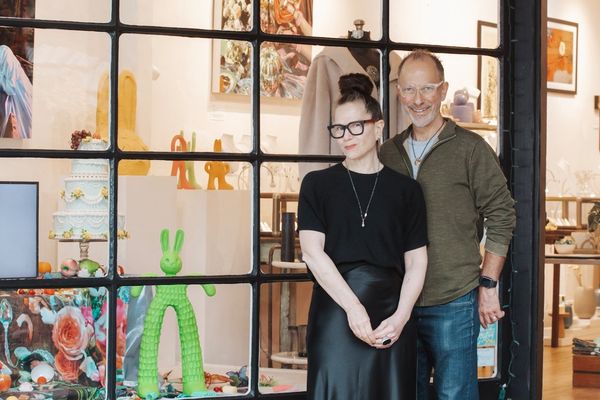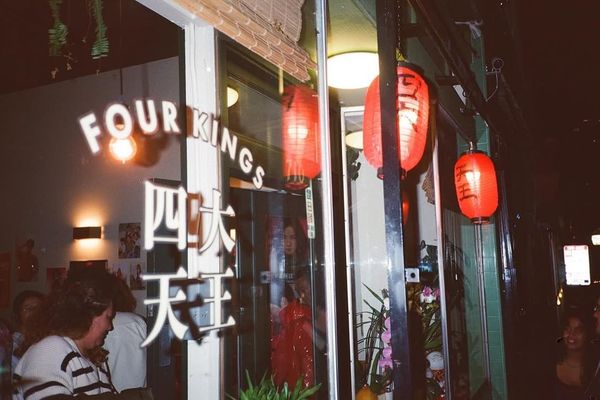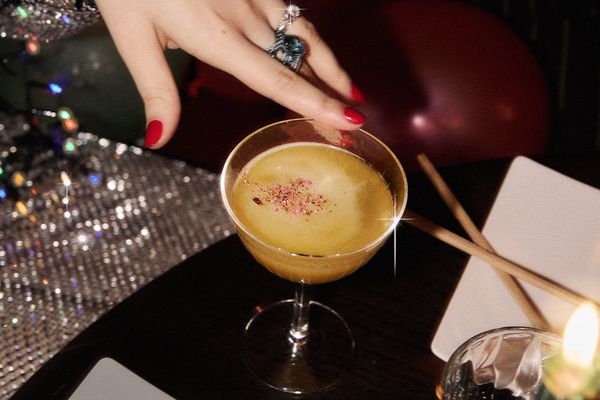
I want to acknowledge a great post by Eric Asimov of the New York Times on the subject of Live Wines. Asimov puts something in writing that I’ve noted myself in tasting over the last several years but never got around to describing, as there’s no formal vocabulary for what he’s talking about. Here’s what Asimov says:
“I love this wine! It embodies all the joy in wine drinking, where no matter how many times you swirl, sniff and taste you cannot pin down what’s in the glass. What’s more it’s absolutely delicious and great with food. But there’s more to it than that elusive quality that I’m going to call aliveness…. Clumsy term? I know. But that’s what these wines are: alive. They don’t sit in the glass waiting to be swallowed. They practically come to you and pull you in, like the scent curling up from one of those cartoon pies cooling on the window sill, reaching out and causing Bugs Bunny problems. This sense of a wine as living comes, I think, from having a captivating texture. You feel the wine coating the tongue and the inside of your mouth, and it feels so good that you are compelled to repeat the exercise. It’s not just white wines, either. Great Champagnes have this texture. So do wonderful Burgundies, but it’s not a question of profundity. Great Beaujolais has it, too. I find it in the Barolos of Giacomo Conterno and Bartolo Mascarello, and in the Brunellos of Biondi SantiCase Basse di Soldera.”
I couldn’t agree with him more. Some wines have a quality of aliveness. Sometimes—not too often—I smell and taste a wine that simply vibrates with a quality of energy and animus that triggers an almost instantaneous reaction of ecstatic joy in my body. It’s a physical reaction, not a mental one, though after a whiff of the wine, my mind gets into the action and starts buzzing away with questions like: What is that? How do you make a wine that tastes like this? If I’m ever getting tired of wine or inured to its pleasures, it simply takes one wine like this to put me obsessively back on the trail, like a hound dog following a scent.
That taste, that smell is a complex thing. I will depart from Asimov at his assertion that it comes “from having a captivating texture.” That’s a part of it, but I also discover it in the nose and in the flavors of the wine. It comes from a certain complexity, where the right flavors are combined like layers of cloth in a tapestry to dazzle but not clash or overwhelm. Typically in these wines there’s not only the aromas of fruit and grapes, but a hint of the earth, of the leaf, of the branch and of the atmosphere. When tasted, these wines have acidity and structure—they’re not rigid, but you are aware of the form underneath the skin and the clothes—and, of course, great texture. And then there’s that spark, that flicker of electricity, that je ne sais quois.
Not every wine has it vintage after vintage, but some get close. Funny enough these are most often wines that are made with fairly traditional methods and minimal technological intervention, often with very little new oak (though not always). You find it everywhere good wine is made, and I think it comes from healthy vineyards in uniquely great spots. When it happens more broadly, I think you can factor in the beneficent force of a great vintage, as in the 2005 Beaujolais that I’ve been going on about for a while now. And maybe, just maybe, you factor in the spirit of the people who made the wine and tended the vines. I'm not so lacking in mystic beliefs that I would not factor that into the equation.
I couldn’t agree more with the Italian examples Asimov mentions as wines often displaying of this phenomenon, though there are many others and Europe doesn't have a monopoly on it. New Zealand is abundant with wines like this. In California, I think of some of the wines I’ve had from Peay Vineyards, Ridge, Copain, Au Bon Climat, Qupe, Sinskey, Tablas Creek and Beckmen. I think of the first time I tasted Nono Zito Nebbiolo from Santa Maria County or Scott Paul and Maysara Pinot Noirs from Oregon. And from Washington, Cayuse, Andrew Will and Quilceda Creek.
And those are but a few that came to mind this morning. There are lots of living wines out there. You’ll know them when you taste them.




















